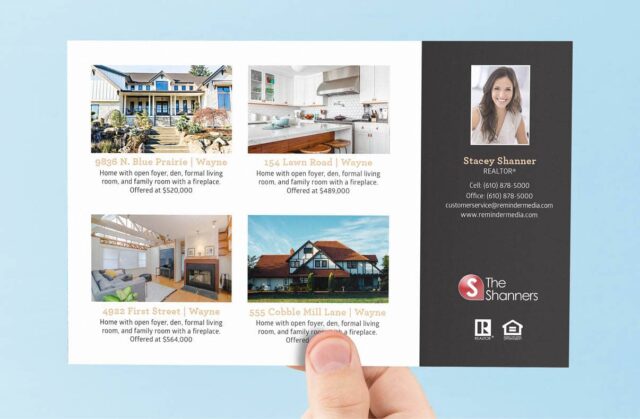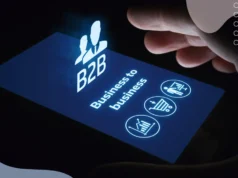
Real estate postcards are an effective way to generate leads and enhance brand recognition. As a real estate agent, using postcards is a cost-effective method of reaching many people with minimal effort. However, as a beginner, there are a few issues you need to put into consideration to avoid sabotaging yourself. Considering you are competing with the industry gurus, you may be tempted to give personal or irrelevant information to prove yourself. This should not be the case.
Postcards do not use envelopes, and your message is more likely to be seen by everyone who comes into contact with the card. A postcard also accommodates very little information, and you need to maximize what appears on the card. Below we look at four things never to include on your real estate postcard as a beginner.
If you’re looking for real estate postcards, you can get started at Wise Pelican.
1. Personal Information

There’s the key information that should appear on your postcard for those who want to reach out to you. Aspects such as your name, contacts, and website are crucial for your prospects to contact you. However, personal information such as where you live, marital status, and where you went to school is not necessary.
You may be tempted to add some of this information to prove to your prospects that you are very good at what you do. For instance, if you went to one of the best business schools in the country, you may be tempted to add it to the card to entice your prospects. This is not necessary whether as a beginner or a guru. The information listed on the card should sell you. If you are not sure what to add on the postcard in place of personal information, below are some ideas of postcards that work:
New agent postcard: As a beginner, a new agent postcard helps you generate new leads. The card helps you get the word out there. You can use this postcard as your first point of contact in a new neighbourhood.
Just listed postcard: this postcard also helps generate buyer leads for the property and also helps add additional seller leads. The card alerts buyers in your network that there’s a property that they may be interested in. It also alerts your neighbours that you can also list their property if they are selling. Circle prospecting is proven to be one of the most efficient techniques as long as you are consistent. Just as the name suggests, it involves the act of sending media to homes surrounding your existing listings and past sales.
Just sold postcards: As a beginner, your first sale is a great achievement. You need to make your presence felt in the neighbourhood, and a successful sale is one of the best ways to introduce yourself. Get the word out there whenever you make a sale. You can even put a sign on the yard for visibility. This should be immediately followed by a postcard telling everyone that you successfully sold a specific property and can do the same for them. With consistency, this kind of circle prospecting helps you get more listings with time.
As you gain experience, you can embrace other types of post cards such as expired listing postcards, among others.
2. Your Salary

The postcard should promote your goal, and this should take much of the space. The card design should be simple not to overwhelm recipients with too many images and unnecessary information. Only add information that’s necessary to entice your audience to respond to the call to action.
Your Salary information should never appear on your real estate postcard. As a beginner, you are most likely earning an entry-level salary compared to the gurus in the industry, don’t use this to look for sympathy. Secondly, this is private information that should not be exposed to your potential clients. Instead, below is key information that should appear on your card.
Business information: this includes your name, contact information, logo, website, and social media pages
National Association of Realtors (NAR) ethics disclosure: According to the NAR code of conduct, realtors are forbidden from soliciting business from buyers and sellers who already have exclusive representation by another realtor. When sending a large number of postcards, there is a possibility you will send to individuals who already have agents.
Call to action: You need to tell your recipients what to do after receiving the postcard. They can call the number on the card to book an appointment, send an email, or chat with you for more information. Receiving a postcard is not a guarantee the recipients will respond. A call to action gives them a clue on what to do. The above is part of the most crucial information on your card; no one needs to know about your salary.
3. Your Past Client’s Information Without Their Consent

The major section of a postcard has images, especially if you are listing a new property. Here, you list images and a description of the properties. Before listing a client’s property as a beginner, it’s important to inquire if they are comfortable having their property listed on your postcard.
Some clients prefer to be discreet on property acquisition; others would not like the vulnerability of having their property appear on hundreds of postcards that are easily accessible to everyone. Before adding this information, always consult past clients and ask for their consent. Ensure you give them clear information on exactly what you want to do with the images. Let them know that the images will be appearing on a document that will be viewed by many people.
4. Your Mistakes

Your postcard needs to have attention-grabbing information and not your mistakes. If you have made mistakes in the past, do not expose yourself to potential clients to gain sympathy. Instead, they may not take you seriously. Instead, add attention-grabbing information on your postcard, including colourful and attention-grabbing images, a unique font, and interesting facts or statements. If you have offers or free gifts for referrals, you can include this information. The idea is to entice your clients to buy into your idea.
As a beginner in real estate, you may be tempted to use unscrupulous methods to get ahead in the real estate world. Do not use unsolicited information such as personal information, client portfolio without consent, past mistakes, or your salary to entice prospects. The best approach is to use the tried and tested methods, be consistent, and, if possible, have a mentor to guide you.









